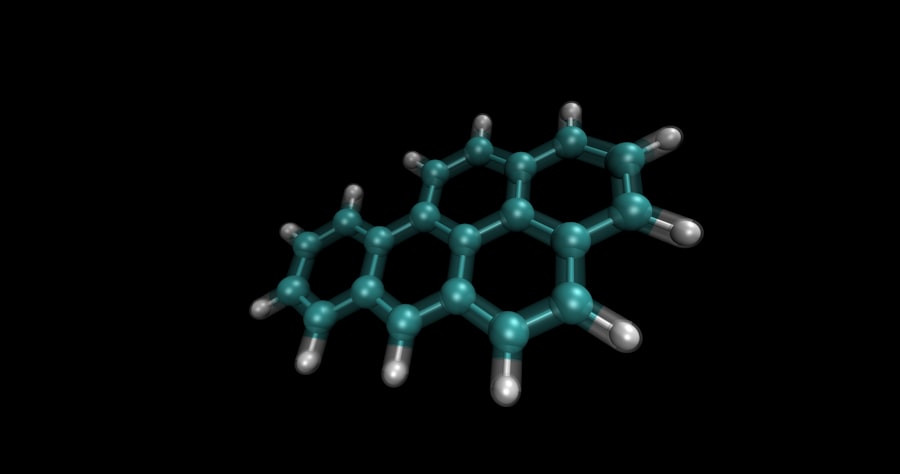Dopamine is often referred to as the “feel-good” neurotransmitter, and for good reason. It plays a crucial role in the brain’s reward system, influencing your feelings of pleasure, motivation, and satisfaction. When you engage in activities that you enjoy, such as eating your favorite food or achieving a personal goal, your brain releases dopamine, reinforcing those behaviors and encouraging you to repeat them.
This chemical messenger is not just about pleasure; it also helps regulate mood, attention, and even movement. Understanding how dopamine functions can provide you with insights into your own behaviors and motivations. However, the role of dopamine extends beyond mere enjoyment.
It is intricately linked to your ability to learn and adapt. When you experience something rewarding, dopamine signals to your brain that this experience is worth remembering. This mechanism is essential for learning new skills and forming habits.
Yet, this same system can lead to challenges when dopamine levels become imbalanced. An overload of dopamine can create a cycle of seeking instant gratification, which may detract from your long-term goals and overall well-being. Recognizing the dual nature of dopamine can empower you to take control of your habits and make more conscious choices.
Key Takeaways
- Dopamine is a neurotransmitter that plays a key role in motivation, reward, and pleasure in the brain.
- Signs of dopamine overload include anxiety, restlessness, and compulsive behaviors.
- Dopamine detox can lead to improved focus, motivation, and reduced cravings.
- To start a dopamine detox, limit exposure to activities that trigger dopamine release, such as social media and junk food.
- Creating a dopamine detox plan involves setting clear goals, finding alternative activities, and practicing self-care.
Signs and Symptoms of Dopamine Overload
As you navigate through life, it’s essential to be aware of the signs that may indicate a dopamine overload. One of the most common symptoms is a constant craving for stimulation. You might find yourself reaching for your phone every few minutes, scrolling through social media, or binge-watching shows without a break.
This incessant need for quick rewards can lead to feelings of restlessness and dissatisfaction when you’re not engaged in these activities. You may also notice that mundane tasks feel increasingly tedious, as your brain craves the high that comes from more stimulating experiences. Another sign of dopamine overload is difficulty concentrating or focusing on tasks that require sustained attention.
You might feel easily distracted or find it challenging to complete projects that don’t provide immediate gratification. This can lead to a cycle of procrastination, where you avoid important responsibilities in favor of more stimulating activities. Additionally, mood swings and irritability can arise when you’re not able to access your usual sources of dopamine.
Recognizing these symptoms is the first step toward addressing the imbalance and taking control of your mental health.
The Benefits of Dopamine Detox

Engaging in a dopamine detox can be a transformative experience for many individuals. By intentionally reducing your exposure to high-dopamine activities, you allow your brain to reset its reward system. This process can lead to increased clarity and focus, as you become less reliant on instant gratification for motivation.
You may find that mundane tasks become more manageable and even enjoyable once you’ve taken a break from constant stimulation. The detox can help you rediscover the joy in simple pleasures that may have previously gone unnoticed. Moreover, a dopamine detox can foster greater self-awareness and mindfulness.
This newfound awareness can help you identify patterns in your behavior and understand what truly brings you fulfillment. Many people report feeling more grounded and present after completing a detox, as they learn to appreciate the moment rather than constantly seeking the next high.
Ultimately, the benefits extend beyond just a temporary reset; they can lead to lasting changes in how you approach pleasure and motivation in your daily life.
How to Start a Dopamine Detox
| Step | Description |
|---|---|
| 1 | Acknowledge the need for change |
| 2 | Set clear goals for the detox |
| 3 | Reduce screen time and digital distractions |
| 4 | Engage in physical activity |
| 5 | Practice mindfulness and meditation |
| 6 | Limit consumption of junk food and sugary drinks |
| 7 | Seek social support and accountability |
Starting a dopamine detox may seem daunting at first, but it can be a straightforward process if approached with intention. Begin by identifying the activities that contribute most significantly to your dopamine overload. This could include excessive screen time, junk food consumption, or even certain social interactions that leave you feeling drained rather than fulfilled.
Once you’ve pinpointed these activities, set a specific timeframe for your detox—whether it’s a day, a weekend, or even a week—during which you’ll abstain from these high-dopamine sources. During this detox period, it’s essential to replace high-stimulation activities with low-dopamine alternatives. Consider engaging in activities that promote mindfulness and relaxation, such as reading, journaling, or spending time in nature.
These activities not only help reduce your reliance on instant gratification but also allow you to reconnect with yourself on a deeper level. Remember that the goal is not to eliminate pleasure entirely but to recalibrate your relationship with it. By consciously choosing how you spend your time during the detox, you set the stage for a more balanced approach to dopamine in the future.
Creating a Dopamine Detox Plan
To maximize the effectiveness of your dopamine detox, creating a structured plan is crucial. Start by outlining your goals for the detox—what do you hope to achieve? Whether it’s improved focus, reduced anxiety, or simply a greater appreciation for everyday life, having clear objectives will guide your journey.
Next, list the specific activities you’ll be avoiding during this period and consider how you’ll fill that time instead. This proactive approach will help prevent feelings of boredom or restlessness that may arise during the detox. In addition to outlining what you’ll avoid, think about incorporating new habits that align with your goals.
For instance, if you’re aiming to improve focus, consider setting aside time each day for meditation or deep work sessions without distractions. You might also want to schedule regular breaks for physical activity or creative pursuits that allow for self-expression without relying on external stimulation. By creating a comprehensive plan that balances avoidance with positive engagement, you’ll be better equipped to navigate the challenges of a dopamine detox successfully.
Strategies for Managing Cravings During a Dopamine Detox

As you embark on your dopamine detox journey, it’s natural to experience cravings for the activities you’ve chosen to avoid. Managing these cravings effectively is key to maintaining your commitment and achieving your goals. One effective strategy is to practice mindfulness techniques when cravings arise.
Instead of immediately giving in to the urge, take a moment to pause and observe the feeling without judgment. Acknowledge the craving as a natural response but remind yourself of your intentions behind the detox. Another helpful approach is to distract yourself with alternative activities that engage your mind and body in different ways.
When cravings hit, consider going for a walk, trying out a new hobby, or connecting with friends in person rather than through screens. Engaging in physical activity can be particularly beneficial, as it releases endorphins and helps alleviate feelings of restlessness or anxiety associated with cravings. By having a toolkit of strategies at your disposal, you’ll be better prepared to navigate the challenges that come with reducing dopamine-driven behaviors.
Finding Healthy Ways to Boost Dopamine Levels
While it’s important to reduce reliance on high-dopamine activities during your detox, finding healthy ways to boost dopamine levels is equally essential for maintaining balance afterward. One effective method is through nutrition; certain foods are known to support dopamine production in the brain. Incorporating foods rich in tyrosine—such as lean proteins like chicken and fish, nuts, seeds, and dairy—can help enhance your body’s natural ability to produce this neurotransmitter.
Additionally, engaging in regular physical activity is another powerful way to boost dopamine levels naturally. Exercise not only releases endorphins but also stimulates the production of dopamine and other neurotransmitters that contribute to feelings of well-being. Whether it’s going for a run, practicing yoga, or dancing around your living room, finding an enjoyable form of movement can significantly enhance your mood and overall mental health.
The Importance of Mindfulness During a Dopamine Detox
Mindfulness plays a pivotal role during a dopamine detox by helping you stay present and aware of your thoughts and feelings throughout the process. Practicing mindfulness allows you to observe cravings without judgment and helps cultivate an understanding of why certain activities trigger strong responses in you. By developing this awareness, you can make more conscious choices about how you engage with pleasure and reward in your life.
Incorporating mindfulness techniques into your daily routine can also enhance your overall well-being beyond the detox period. Consider setting aside time each day for meditation or deep breathing exercises to ground yourself in the present moment. Journaling can also be an effective way to process your thoughts and emotions during this time.
By fostering mindfulness during your detox journey, you’ll not only gain insights into your relationship with dopamine but also develop skills that will serve you well long after the detox is over.
Incorporating Exercise and Movement into Your Dopamine Detox
Exercise is an invaluable tool during a dopamine detox as it provides an alternative source of pleasure while promoting overall mental health. Engaging in physical activity releases endorphins and stimulates dopamine production naturally, helping counteract any feelings of withdrawal from high-dopamine activities you’ve chosen to avoid. Whether it’s going for brisk walks, practicing yoga, or participating in group sports, finding ways to incorporate movement into your daily routine can significantly enhance your mood.
Moreover, exercise offers an opportunity for self-reflection and mindfulness as you connect with your body and breath during physical activity. You might find that focusing on movement allows you to clear your mind and gain perspective on any cravings or urges that arise during the detox process.
Seeking Support and Accountability During a Dopamine Detox
Embarking on a dopamine detox can be challenging, which is why seeking support from friends or family members can be incredibly beneficial. Sharing your goals with others creates a sense of accountability that can motivate you to stay committed throughout the process. Consider finding an accountability partner who shares similar goals or interests; this way, you can encourage each other along the way and celebrate small victories together.
Additionally, joining online communities or support groups focused on mental health and wellness can provide valuable resources and encouragement during your detox journey. Engaging with others who understand what you’re going through can help alleviate feelings of isolation and reinforce your commitment to making positive changes in your life.
Maintaining a Balanced Dopamine Lifestyle After the Detox
Once you’ve completed your dopamine detox, it’s essential to maintain a balanced lifestyle moving forward. Reflect on what you’ve learned during this process about yourself and your relationship with pleasure and reward. Consider implementing some of the strategies you’ve discovered—such as mindful eating habits or regular exercise—into your daily routine to ensure that you’re not falling back into old patterns of seeking instant gratification.
Creating boundaries around high-dopamine activities is also crucial for sustaining balance in your life post-detox. For instance, if social media was one of the primary sources of overload for you, consider setting specific times during the day when you’ll check it rather than allowing it to consume your attention throughout the day. By being intentional about how you engage with pleasurable activities moving forward, you’ll cultivate a healthier relationship with dopamine that supports both your mental well-being and long-term goals.
In recent years, the concept of dopamine detox has gained popularity as a method to improve mental health by reducing overstimulation and allowing the brain to reset. This practice involves taking a break from activities that trigger excessive dopamine release, such as social media, video games, and even certain foods. For those interested in exploring this topic further, an insightful article on dopamine detox and its benefits can be found on Unplugged Psychology’s website. This article delves into the science behind dopamine regulation and offers practical tips for implementing a detox in your daily life. To read more about it, visit this page.
LEARN WHY Your Brain Isn’t Addicted to Likes; the Algorithm Gaslights You Daily, Hard.
FAQs
What is dopamine detox?
Dopamine detox is a method aimed at reducing the overstimulation of the brain’s reward system, particularly in response to activities such as social media, video games, and junk food. It involves taking a break from these activities to reset the brain’s dopamine levels and re-sensitize the reward system.
How does dopamine detox affect mental health?
Dopamine detox can have a positive impact on mental health by reducing addictive behaviors, increasing motivation, and improving focus and productivity. By resetting the brain’s reward system, individuals may experience reduced anxiety, improved mood, and a greater sense of control over their impulses.
What are the benefits of dopamine detox for mental health?
Some potential benefits of dopamine detox for mental health include increased self-discipline, enhanced emotional regulation, improved attention span, and a greater appreciation for everyday activities. It can also help individuals break free from unhealthy habits and develop a more balanced and fulfilling lifestyle.
How long should a dopamine detox last?
The duration of a dopamine detox can vary depending on individual needs and goals. Some people may benefit from a short detox period, such as a day or a weekend, while others may choose to engage in a longer detox lasting several weeks. It’s important to tailor the detox to fit one’s specific circumstances and to seek professional guidance if needed.
Are there any potential risks or drawbacks to dopamine detox?
While dopamine detox can be beneficial for many individuals, it’s important to approach it with caution. Some people may experience withdrawal symptoms, such as irritability or restlessness, during the detox process. Additionally, abruptly stopping certain activities, such as caffeine or social media, can lead to temporary discomfort. It’s important to consult with a healthcare professional before starting a detox, especially for individuals with underlying mental health conditions.




